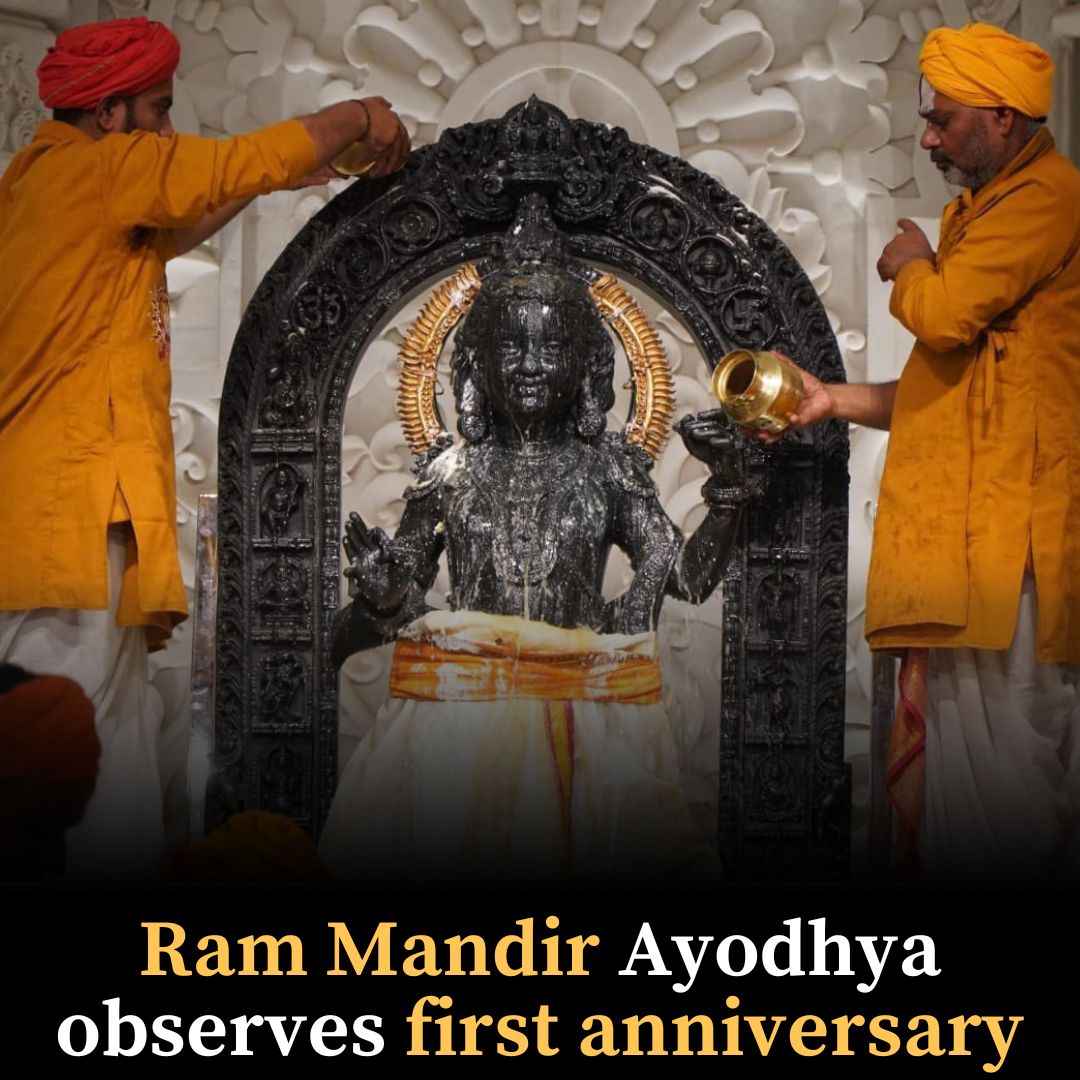Today, 11 January 2025, marks the 1st Patotsav of Shri Ramlalla at the Janmabhoomi Mandir at Ayodhya (UP, India). The Patotsav is a ritual performed annually on the anniversary of when the Prana-Pratishta (deity installation took place). During Prana-Pratishta, the divine presence is awakened in the stone or metallic Murthi, and from that point, the Murthi is treated as the form of the deity. The ultimate purpose of the Murthi is to enable the worshiper to awaken the divinity that also lies within themselves. After the Prana-Pratishta, the divine energy in the Murthi is maintained through daily rituals and strict protocol. During the annual Patotsav, the Archakas/Pujaris (Priests) who serve the deity seek forgiveness for any lapses in the process over the previous year and perform rituals to re-energise the Murthi. For all devotees, the Patotsav is celebrated as a festival of when their Devata (in this case, Shri Rama) descended into the Mandir.
The new Mandir at Ayodhya (one of Hindu Dharma’s 7 most sacred cities) marks the site of Rama-janma-bhumi (Rama’s birthplace) and is of exceptional spiritual importance to all Hindus across the world. This new structure replaces an earlier Mandir that was destroyed by fanatical Islamic invaders during the medieval period. Following a 500-year struggle, Hindus reclaimed the site in 1992 and on Monday, 22nd of January last year*, the Shri Ramlalla; the president deity, was installed. Today celebrates an important milestone in the struggle for Hindus to decolonise their sacred spaces. The Ayodhya temple is one of over 2000** indigenous religious structures in Bharat destroyed by fanatical Islamic and European invaders during the medieval period. Colonisers targeted some of the most sacred sites in Hindu Dharma. The reclamation of Rama Janmabhumi has given hope to Hindu activists, lawyers, and spiritual leaders currently seeking to liberate other sacred spots, which include the birthplace of Krishna (Mathura and the Vishvanath Linga (Kashi).
*Patotsavs should be marked as per Hindu calendar systems using either the tithi (moon phase) or nakshatra (constellation) as per the Hindu lunisolar or solar months (instead of the Gregorian calendar system). The Ayodhya Mandir follows the Lunisolar Hindu calendar, hence the Prana-Pratishta last year took place on the Dwadashi Tithi (12th moon phase) following the dark moon (Shukla Paksha) in the Hindu Lunar month Pausha (which falls today).
**Goel, S, R (1990). Hindu Temples – What Happened to Them (Vol I)
Image credits: Shri Ram Janmbhoomi Teerth Kshetra

